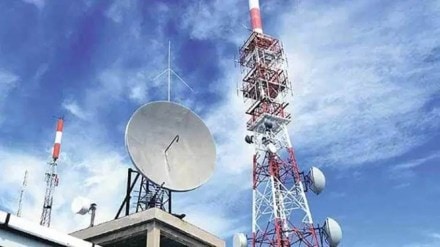The Cellular Operators Association of India on Thursday said that the wireless licensing reforms will help in ease of doing business for the telecom sector and faster deployment of network and services to the end users. The comments from COAI, which represents major telecom operators, follow government’s announcement of procedural reforms undertaken in the current year for wireless licensing and satellite communications.
On Wednesday, the government also released a National Frequency Allocation Plan (NFAP) 2022, under which it has defined the roadmap to use spectrum for telecom, broadcasting, and other radio services. Among key things, in the NFAP document the government has introduced additional 17 GHz spectrum in the frequency bands of below 1 GHz, between 1-6 GHz, and over 6 GHz for implementation of 5G.
Also read: Fixed Deposit or Mutual Funds? What is the No. 1 investment choice for Indians? Survey reveals
In the wireless licensing reforms 2022, the government has simplified procedure for Standing Advisory Committee on Radio Frequency Allocation (SACFA) certificate clearance which is required for installing small cells on street furniture and also reduced the processing fee to `100 from `1,000. “This will help TSPs (telecom service providers) reduce their compliance burdens and save time, facilitating expediting the roll out of telecom services in the country,” COAI said.
Among other key reforms in the wireless licensing, the government has made the process for applying for licences online through GatiShakti Sanchar Portal, issued advisory on use of wireless jammers to stop illegal activities, and de-licensed various frequency bands for easy use of devices such as Wi-Fi routers, Bluetooth, etc.
“The industry is enthused and motivated with the impetus being provided by the Government towards strengthening the critical telecom ecosystem in the nation, and we look forward to provide all the requisite support to help realize the collective vision of a ‘Digital India’ for all. We are optimistic that the other issues faced by the industry will also be addressed by the Government in a similar manner,” SP Kochhar, director general of COAI, said.
Communications minister Ashwini Vaishnaw on Wednesday said that the government will now introduce the big-ticket licensing reforms for the sector. The licensing reforms are expected to reduce certain levies and simplify the licensing provisions for the telecom service providers.
The minister had also asked the telecom companies to start deploying 10,000 base transceiver stations (BTS) (used to facilitate communication between devices and telecom network) per week, up from 2,500 BTS per week currently.
Also read: IDBI Bank profit jumps 46% in Q2
Apart from the procedural reforms in the wireless licensing, the government also detailed reforms in the satellite communications aimed at simplifying satellite-related clearance processes. Some reforms in the sector include self-certification of antenna deployment, reduction in fee and timeline for NOCC (National Operations Control Centre) process required for setting up satellite network, and exemption of license fee for machine-to-machine/IoT devices for captive VSAT (Very Small Aperture Terminal licensees).
VSAT is a satellite communication technology which is useful for providing data connectivity to remote and inaccessible locations where there is limited or no terrestrial connectivity.
